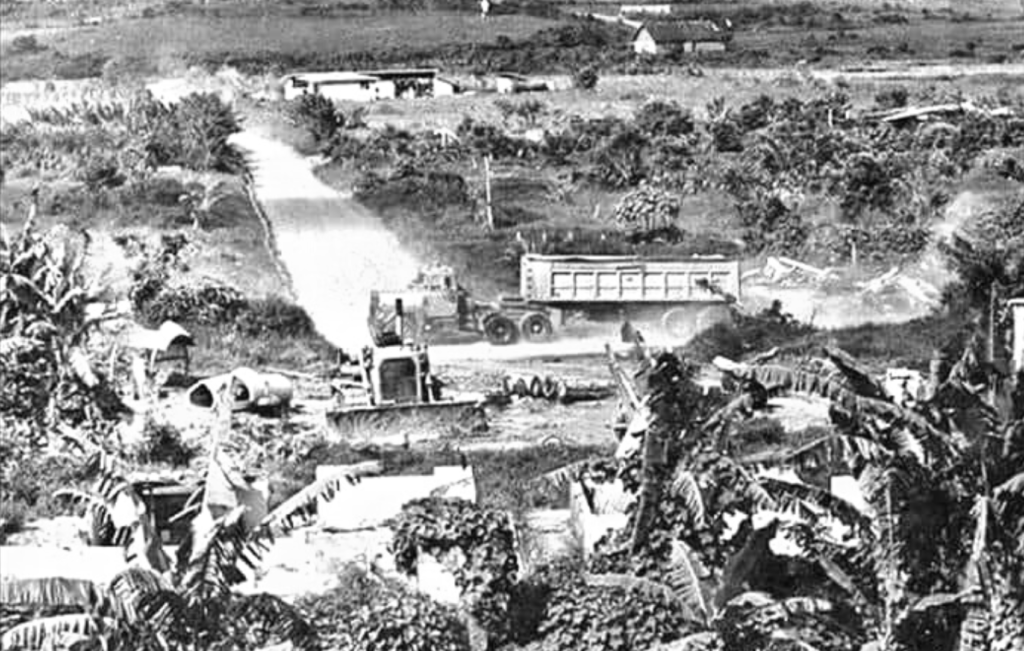Nestled in the heart of Costa Rica, surrounded by lush rainforests and the majestic Arenal Volcano, lies Lake Arenal, a man-made marvel that epitomizes the country’s dedication to renewable energy and environmental preservation.
The story of Lake Arenal’s creation is not just about the construction of a dam; it’s a narrative that intertwines the aspirations for progress with the imperative of conserving nature’s bounty.
The name « Lake Arenal » (Lago Arenal in Spanish) is derived from the Arenal Volcano, which is located nearby and is one of the most notable landmarks in the country. The Arenal Volcano itself gets its name from the Spanish word « arenal, » meaning « sandy area » or « sand bank, » referring to the sandy deposits along its slopes and surrounding area.
Dominating the landscape, Arenal Volcano, is one of the country’s most iconic and active volcanoes of Costa Rica. Rising to an elevation of 1,657 meters (5,437 feet), this symmetrical conical-shaped volcano has become a symbol of natural beauty and power in the country.
The Why: A Vision for Renewable Energy
The inception of Lake Arenal in the 1970s was propelled by Costa Rica’s visionary approach towards sustainable and renewable energy sources. Prior to its expansion, Costa Rica was grappling with the challenges of energy scarcity and dependency on imported oil, which was not only costly but also vulnerable to the volatilities of international markets. The need for a reliable and self-sufficient energy solution was paramount.
The project of Lake Arenal was to become the linchpin of Costa Rica’s renewable energy strategy. The government, recognizing the hydroelectric potential of the Arenal River, envisaged the creation of a reservoir that could serve dual purposes: generating hydroelectric power and providing a sustainable water supply for agricultural and domestic use.
The project was aimed at harnessing the country’s natural resources to fuel its development while minimizing environmental impact—a testament to Costa Rica’s ethos of living in harmony with nature.
The How: Engineering Meets Environmental Stewardship
The construction of the Arenal Dam and the subsequent creation of Lake Arenal was a monumental engineering endeavor. It involved the expansion of an existing small lake into a reservoir that spans an area of 85 square kilometers, making it the largest lake in Costa Rica.
The construction of the dam, completed in 1979, was a meticulous process that required not only advanced engineering techniques but also a comprehensive environmental management plan to mitigate the impact on the local ecosystem and communities.
One of the most significant challenges was the relocation of communities that were situated in the flood zone of the proposed reservoir. The Costa Rican government undertook a careful and respectful relocation process, ensuring that affected families were provided with new homes and farmlands.
Additionally, environmental conservation measures were integral to the project, with efforts made to preserve the local flora and fauna, including reforestation initiatives around the lake’s perimeter.

One of the most notable relocations was the new village of Nuevo Arenal (New Arenal), which was established to house the residents of the old Arenal village. Nuevo Arenal was strategically placed outside the flood zone, on the lake’s northeastern shore.
The government ensured that the new location provided adequate land and facilities for the residents, aiming to replicate the communal and economic structures of the old village as closely as possible. Despite these efforts, the move was a significant upheaval for many residents, who had to adjust to new surroundings and a changed way of life.
The hydroelectric power plant at Lake Arenal, operated by the Costa Rican Electricity Institute (ICE), became a cornerstone of the country’s energy matrix. It has the capacity to produce a significant portion of Costa Rica’s electricity, contributing to the nation achieving its remarkable feat of generating over 98% of its electricity from renewable sources.

The Wisdom: A Legacy of Sustainability and Tourism
The creation of Lake Arenal has had ripple effects beyond its primary objective of energy production. The lake has become a hub for tourism and recreation, attracting visitors from around the globe drawn to its scenic beauty, windsurfing opportunities, and the chance to explore the nearby Arenal Volcano National Park. This blend of natural attraction and recreational activities has bolstered the local economy and highlighted the potential of sustainable tourism.
In conclusion, the story of Lake Arenal is a testament to Costa Rica’s forward-thinking approach to energy and environmental conservation. It exemplifies how human ingenuity, coupled with a profound respect for nature, can create solutions that serve both the present and future generations. Lake Arenal is not just a lake; it is a beacon of sustainability, echoing Costa Rica’s message to the world about the possibilities of harmonious development.

- A Small Nation, a Great Talent: The Story of Luis Castillo-Briceño
- Voyager en sécurité : votre guide essentiel au Costa Rica
- Enhanced Safety in Costa Rica: A New 9-1-1 Center Dedicated to Tourists
- Sécurité renforcée au Costa Rica : un nouveau centre 9-1-1 au service des touristes
- Le costaricien Luis Castillo Briceño, nous parle de son triomphe à la compétition internationale des chefs d’orchestre
